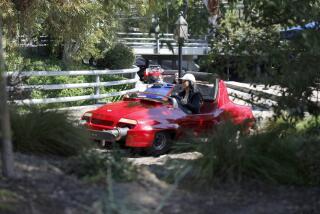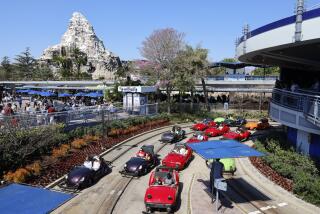Saturday Drive: 1963 Shelby 289 Cobra Mk II
The car: 1963 Shelby 289 Cobra Mk II
The power: 271 horsepower and 312 pound-feet of torque from a 289-cubic-inch V-8 (about 4.7 liters). Power is routed to the rear wheels via four-speed manual transmission.
The photos: Shelby 289 Cobra Mk II
The speed: Motor Trend tested a 289 Cobra in 1963 and hit 60 mph in 5.8 seconds, but claimed that time would probably drop with the addition of better tires in the rear to combat wheel spin.
The price: Estimated at $600,000 to $700,000. This car will be up for auction by RM Auctions in Monterey, Calif., on Aug. 17 and 18.
The details: You can’t swing a tire iron in the automotive industry without hitting someone overusing the word iconic. But when you’re talking about the Shelby Cobra, iconic is absolutely appropriate.
The Shelby Cobra was born in 1962 when former race car driver Carroll Shelby (he of recent passing) procured a pair of Ford V-8s and fit them into a modified version of a small, two-seat roadster made by tiny British manufacturer AC. Only 75 were produced with that motor (a 260-cubic-inch V-8) before Shelby started using the 289-cubic-inch V-8 you see here.
The 289 at the time featured a four-barrel carburetor that routed power through a four-speed automatic transmission. Suspension is independent in the front and rear and features leaf springs. The car also has four-wheel disc brakes. Later in the 1960s, Weber carburetors were fitted to this particular car, and it got a more thorough restoration in the mid-1980s. This project beefed up the car’s frame, swapped in a Holley carburetor, painted the color you see now, and added Daytona wire wheels, new tires, a new exhaust and a new black vinyl interior. It has a little more than 30,000 original miles on it.
Even when new, the Shelby Cobra was a relative simpleton; side windows, a roof and air conditioning were merely afterthoughts. This was despite a relatively robust price tag of $5,500 to $6,000, a figure certainly higher than the asking price of the more refined Chevy Corvette of the day.
But the low weight and immense power of the Cobras proved irresistible to drivers and more importantly, racers. Race-prepped versions almost immediately gave the more powerful, yet heavier Corvettes plenty of headaches at the track, and gave Ford the Chevy-fighter it had been seeking. For the next three years, Cobras dominated Corvettes in domestic racing.
Carroll Shelby would later continue his racing success with the slightly larger and more widely recognized Cobra 427, then the Ferrari-beating Daytona Cobra Coupe and Ford GT40. Oh, and he also created a little something called the Shelby Mustang.
The drive: Climbing into a Shelby Cobra is an easy affair, what with no roof or windows or even exterior door handles to fuss with. Just reach over the windowsill and unlatch the door. The cockpit is spacious and airy and generally a comfortable place to spend some time. The only exception to this is a remarkably narrow foot well for the driver. The three pedals are crammed together and have a waif-like quality to them, so those of you with seven Es in your foot size may loathe the manual transmission.
The Cobra fires up with a pronounced roar, one made all the better by the fact that we started this one inside a garage. The car idles with the rough-edged burble of the stout V-8s from this era, more tenor than it is bass.
The clutch pedal is stiffly sprung and pushes back hard with force. It’s a smidge tricky the first time you kick it, but adaptation comes quickly. Meanwhile, the shifter has tight, quick movements that throw wind in your sails of confidence.
Despite the Cobra’s rich racing pedigree, driving one off from a dead start is wonderfully manageable and engaging. And yes, quick. There’s a small dead spot early in this car’s acceleration curve, but with a little finesse of the throttle, you’ve soon put a large gap between you and anything in your neighboring lanes. The engine truly wakes up above 3,000 RPM, both with power and noise, and barks its approval as you stab the throttle. It sounds and feels like it could accelerate indefinitely and reminds you it’s from an era of driving when men were men and guardrails were nervous.
Sadly, turning and braking are inevitable necessities, and here the car reminds you that iconic or not, it’s still 50 years old. Both systems work great for their time, just don’t think you’re running laps in a 2012 Shelby GT500. The brakes are disc and the steering is rack and pinion (but not power-assisted), and a bit of forethought is required when using them. But press the former and crank the latter, and the car turns with poise and control. It’s small wonder this model proved so adept at giving Chevy’s Corvette team ulcers back in the 1960s. Body roll is nicely contained and the car is surprisingly supple over the pavement’s irregularities.
This Shelby Cobra is one of six that RM Auctions will be auctioning at the Pebble Beach Concours d’Elegance, a number RM says is higher because it’s the 50th anniversary of the Shelby Cobra and because Shelby himself died earlier this year. Indeed, the annual Rolex Monterey Motorsports Reunion, a series of races between classic race cars held during Pebble Beach weekend, will honor the 50th anniversary of this icon. It’s an apt use of the word indeed.
Be sure to stay tuned next week as we bring you all the highlights from Pebble Beach Concours d’Elegance. Follow David on Twitter here: @LATimes_Driven







